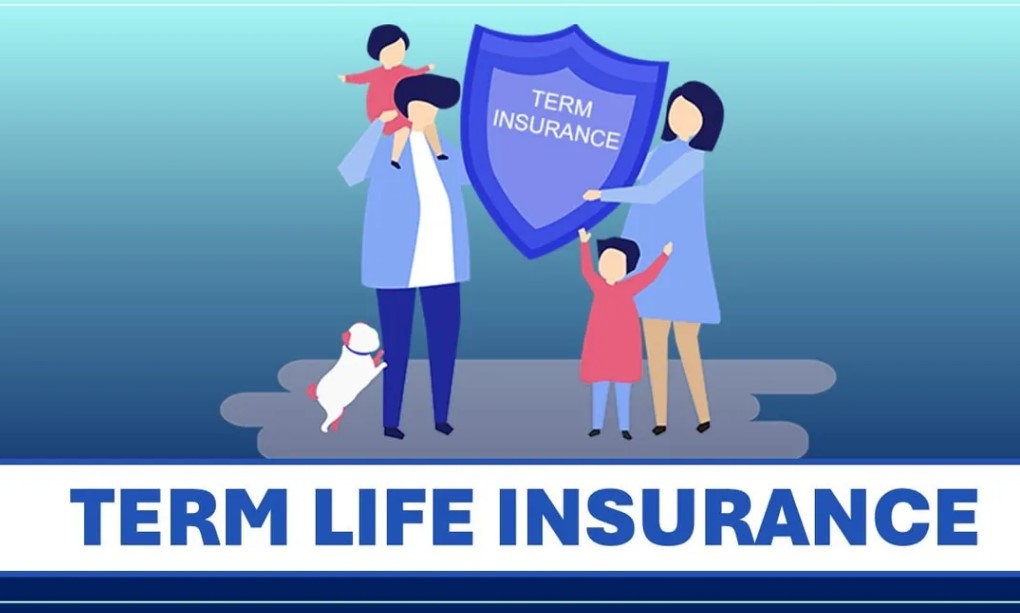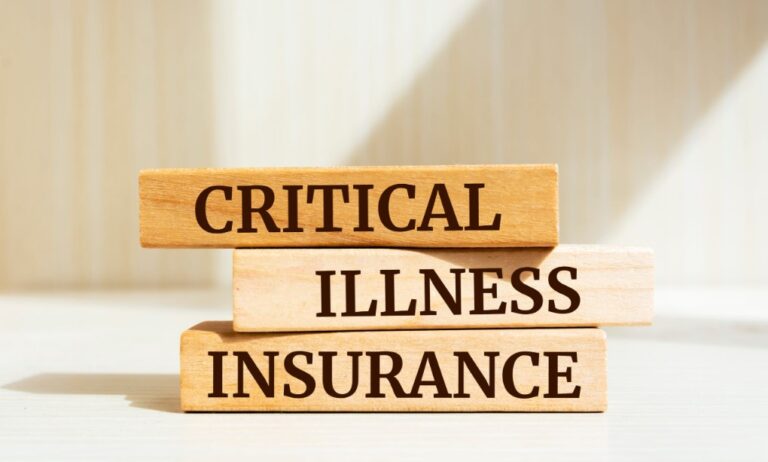Term Life Insurance Explained: Which One is Right for You?
Term life insurance is an essential financial tool for individuals seeking affordable and reliable coverage for a specific period. This type of policy can help protect your loved ones financially if something unexpected were to happen. Unlike permanent life insurance, which lasts for a lifetime and includes investment components, this insurance is designed to provide coverage for a set number of years—usually between 10 and 30 years.
In this comprehensive guide, we will break down the fundamentals of term life insurance, explore the benefits, compare some of the top term life insurance products in the market, and explain how to purchase the right policy for your needs.
What is Term Life Insurance?

Term life insurance is a policy that covers the insured person for a specified period, such as 10, 20, or 30 years. The beneficiaries will be paid a death benefit if the insured person dies within the period. However, there is no payment and the coverage expires if the person survives past the period.
The simplicity and affordability of term life insurance make it an appealing choice for many people, especially those who do not need lifelong coverage. Since it does not accumulate cash value like permanent insurance policies, this insurance can provide larger coverage amounts at a more affordable price. This makes it an excellent option for individuals looking to protect their families during critical life stages, such as raising children or paying off a mortgage.
Types of Term Life Insurance

Term life insurance provides coverage for a specific period, such as 10, 20, or 30 years, and is typically more affordable than permanent life insurance. There are different types of term life insurance policies, each designed to suit various needs. Below, we break down the most common types of term life insurance.
1. Level Term Life Insurance
- Features:
- Fixed death benefit throughout the policy term.
- Fixed premiums for the entire policy duration.
- Common term lengths: 10, 20, or 30 years.
- Best For:
- Individuals who want predictable premiums and death benefits.
- Families with stable financial obligations like mortgages, child education, and other long-term debts.
- Example: A 20-year level term policy with a $500,000 death benefit will pay $500,000 to the beneficiaries if the insured passes away during the 20-year period. The premiums remain consistent throughout.
2. Increasing Term Life Insurance
- Features:
- Over time, the death benefit often rises by a certain percentage annually.
- Premiums generally rise each year or at specific intervals.
- Seeks to stay up with growing financial obligations or inflation.
- Best For:
- Individuals who expect their financial responsibilities to grow over time (e.g., growing family or expanding business).
- Those who want their coverage to adapt to inflation.
- Example: A policy with an initial death benefit of $100,000 could increase by 5% annually, leading to a payout of $130,000 after 5 years.
3. Decreasing Term Life Insurance
- Features:
- Over the duration of the insurance, the death benefit declines.
- Usually, premiums don’t change during the course of the term.
- Often used to cover specific debts (e.g., mortgage) that decline over time.
- Best For:
- People who want to cover decreasing debts, such as a mortgage or loan.
- Ideal for homeowners seeking to protect their family from mortgage-related debt.
- Example: A 30-year mortgage with a decreasing term life insurance policy will have a death benefit that decreases as the mortgage balance decreases. The premiums stay the same, but the coverage reduces over time.
4. Convertible Term Life Insurance
- Features:
- Allows policyholders to convert the term life policy into a permanent life insurance policy.
- No medical exam required for conversion, even if health conditions change during the term.
- The conversion option typically expires after a set number of years (e.g., 5 years).
- Best For:
- People who may want to switch to permanent life insurance in the future.
- Those who are unsure about whether they will need permanent coverage later in life.
- Example: A 20-year term policy with a convertible option allows the policyholder to convert it to permanent life insurance without needing to reapply or undergo a medical exam during the first 5 years.
5. Return of Premium (ROP) Term Life Insurance
- Features:
- If you outlive the policy, you receive a refund of the premiums paid.
- Premiums are higher than standard term life insurance due to the refund feature.
- Offers peace of mind for people who are hesitant to pay for a policy that may expire without any return.
- Best For:
- People who want to ensure that their premium payments are not “lost” if they don’t pass away during the policy term.
- Individuals who are risk-averse and prefer knowing that they’ll receive a refund if they outlive the policy.
- Example: A 20-year Return of Premium policy might refund the total amount of premiums paid if the policyholder survives the full 20 years. For instance, if you paid $10,000 in premiums over 20 years, you would get that amount refunded.
Top Term Life Insurance Products for 2024

Here are three top-rated term life insurance products that offer exceptional coverage, benefits, and customer service. These products are tailored to suit various needs and offer flexibility for different life stages.
1. Haven Life Term Life Insurance
Haven Life is an innovative life insurance provider backed by MassMutual, a trusted name in the insurance industry. This company offers an easy-to-use platform that allows you to apply for life insurance online without the need for extensive paperwork or in-person appointments.
Key Features:
- Coverage Amounts: Haven Life offers coverage amounts ranging from $100,000 to $3 million.
- Policy Term: You can select from 10, 20, or 30-year term options.
- No Medical Exam: For applicants who are in good health and meet certain age and coverage limits, Haven Life offers a no-medical-exam policy option, which simplifies the application process.
- Online Application: Haven Life’s online platform makes applying for term life insurance quick and easy. The process is designed to be hassle-free, and you can get an approval in just minutes.
Pros:
- Fast approval process, especially with the no-medical-exam option.
- Simple, online application process.
- Competitive pricing, particularly for healthy individuals.
Cons:
- May not be available to individuals with certain pre-existing health conditions.
- Limited customer support options compared to some larger insurers.
Price: Starting at approximately $9 per month for a healthy 30-year-old.
Use Case: Haven Life is ideal for individuals seeking affordable, straightforward term life insurance with minimal hassle. If you are young, healthy, and prefer the convenience of an online process, this product could be a great fit for you.
2. Protective Life Term Life Insurance
Protective Life offers flexible and customizable this insurance plans that can be tailored to your changing needs. Their policies are designed to be adaptable, allowing you to adjust coverage or convert your policy into permanent life insurance if your needs evolve.
Key Features:
- Coverage Amounts: Protective Life offers coverage options from $100,000 to $50 million, allowing you to select the right amount based on your needs.
- Term Length: Choose from a variety of terms, including 10, 20, and 30 years.
- Convertible Option: If you decide that you need permanent life insurance later, Protective Life allows you to convert your term policy into a permanent policy without a medical exam, ensuring you continue coverage without additional health checks.
- Additional Riders: Optional riders, such as the Accelerated Death Benefit Rider and Disability Waiver of Premium Rider, can be added to enhance your coverage.
Pros:
- Customizable coverage with the option to convert to permanent insurance.
- Wide range of coverage amounts and term lengths.
- Additional riders available for enhanced protection.
Cons:
- Medical exams may be required for higher coverage amounts.
- Premiums may be slightly higher compared to other insurers for the same coverage.
Price: Starting at around $12 per month for healthy individuals.
Use Case: Protective Life is an excellent choice for individuals who want flexibility and the option to convert their policy to permanent insurance in the future. It’s also ideal for those who need larger coverage amounts or want to add riders for additional protection.
3. State Farm Term Life Insurance
State Farm is one of the most trusted names in insurance, known for its strong customer service and long-standing reputation. Their insurance policy is perfect for those seeking stability, reliability, and the ability to customize their coverage.
Key Features:
- Coverage Amounts: Available in coverage amounts from $100,000 to $10 million.
- Term Options: State Farm offers flexible term lengths, including 10, 20, and 30 years, to match your needs.
- Riders: The option to add riders such as a children’s life insurance rider or accidental death benefit rider for additional coverage.
- Strong Customer Support: State Farm is known for its excellent customer service, making it easy for policyholders to get assistance with their policies.
Pros:
- Reliable customer service with extensive support options.
- Easy-to-use online tools and access to agents.
- Customizable coverage with additional riders.
Cons:
- Premiums may be slightly higher than some competitors, especially for younger applicants.
- Not available in all states, limiting access in certain regions.
Price: Starting at approximately $11 per month for healthy individuals.
Use Case: State Farm is ideal for those who value customer service and want a long-term, reliable insurer. It’s also a great choice for people who need the flexibility to add riders or adjust their coverage as their financial situation changes.
How to Buy Term Life Insurance

Steps to Purchase Term Life Insurance:
- Assess Your Coverage Needs: Begin by evaluating your financial obligations, such as your mortgage, children’s education, and other long-term expenses. This will help you determine the amount of coverage you need.
- Research Insurers: Compare different insurance providers based on coverage options, premium rates, and customer reviews. Focus on top providers like Haven Life, Protective Life, and State Farm, which offer a range of flexible policies.
- Get Quotes: Use online tools to obtain quotes from multiple insurers and compare them based on the coverage amount, policy length, and price.
- Apply for Coverage: Once you’ve selected the best policy for your needs, apply online or contact an agent to start the application process.
- Medical Exam (if required): Some insurers may ask you to undergo a medical exam, especially for higher coverage amounts. This helps determine your health status and premium.
- Review and Purchase: After receiving approval, carefully review the policy details before finalizing your purchase.
How Much Does Term Life Insurance Cost?
The cost of term life depends on several factors, including your age, health, the coverage amount, and the length of the term. Generally, a healthy 30-year-old can expect to pay anywhere between $9 to $20 per month for a $500,000 policy. The younger and healthier you are when purchasing the policy, the more affordable the premiums will be.
Premiums also vary based on the term length you select. For example, a 10-year term will usually cost less than a 30-year term, all else being equal. To get the best deal, compare quotes from multiple insurers and consider factors such as the company’s reputation, financial stability, and customer service.
Use Cases for Term Life Insurance
Term life insurance is a versatile financial tool designed to meet various needs, providing protection for a specific period. Below are some of the most common use cases for this insurance, highlighting its relevance to different life situations.
1. Young Families
Term life insurance is particularly valuable for young families, where the primary breadwinner’s untimely death could result in significant financial hardship. A term life policy ensures that the family has enough funds to cover living expenses, mortgage payments, child care, and educational costs. By purchasing coverage for a specific term (e.g., 20 or 30 years), parents can secure the financial future of their children and spouse.
Example Use Case: A 30-year-old father with a young child might buy a 20-year term policy with a $500,000 death benefit to provide his family with the necessary financial resources if something were to happen to him during those years.
2. Homeowners
Homeowners often purchase term life insurance to ensure that their mortgage or other significant debts are paid off if they pass away. A term life policy can be aligned with the duration of the mortgage, ensuring that the surviving family members aren’t burdened with housing payments.
Example Use Case: A couple with a 30-year mortgage might buy a 30-year term life insurance policy, making sure that if either spouse passes away, the mortgage is paid off, and the surviving spouse is not forced to sell the house.
3. Business Owners
Term life insurance is also beneficial for business owners who want to protect their business from financial instability in the event of their death. A term life policy can cover outstanding business debts, ensure a smooth transfer of ownership, or provide the necessary funds for a business partner to buy out the deceased’s share.
Example Use Case: A small business owner might use term life insurance to cover business debts or a buy-sell agreement with business partners. This ensures that the business continues smoothly after the owner’s death.
4. Income Replacement
Term life insurance can serve as a means of replacing lost income for the family of a deceased wage earner. With a term life policy, the family can maintain their standard of living by providing a death benefit that replaces the income the deceased would have earned.
Example Use Case: A single parent may purchase a 20-year term policy to provide enough funds to cover living expenses and child care, ensuring the children are supported even without the parent’s income.
Frequently Asked Questions (FAQs)
1. How much term life insurance coverage do I need?
The amount of coverage you need depends on several factors, including your financial obligations, income, and the needs of your dependents. Generally, a good rule of thumb is to purchase coverage that is 10 to 15 times your annual income.
2. Can I convert my term life insurance policy to permanent insurance?
Yes, Without having to go through a medical examination, many insurers allow you to convert your term life insurance policy into permanent life insurance. As a result, you can keep your coverage without worrying about how your health will change.
3. What happens if I outlive my term life insurance policy?
If you outlive your term policy, you will not receive any payout, and the policy will expire. Some insurers offer a renewal option or the ability to convert the policy to permanent coverage, but premiums may increase significantly after the initial term.






